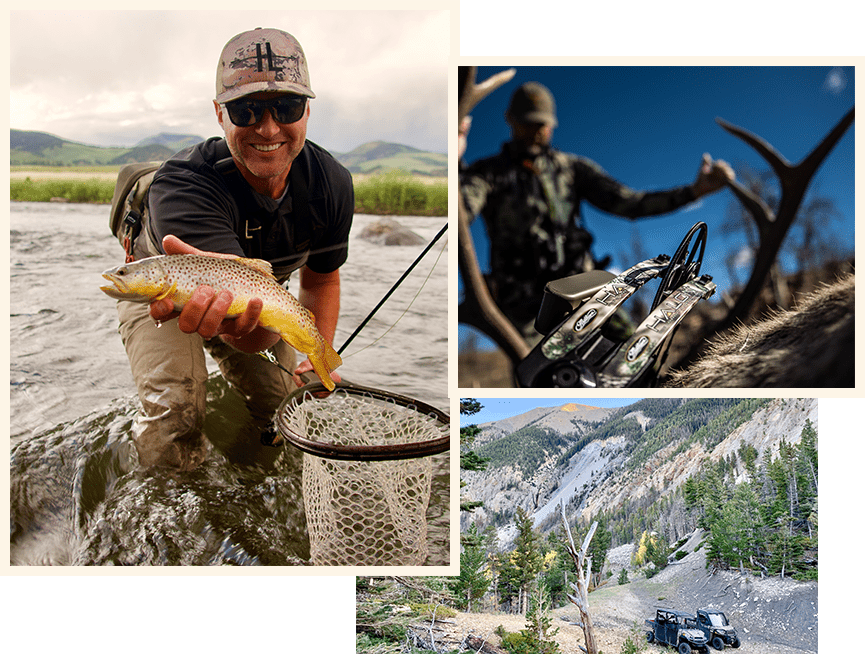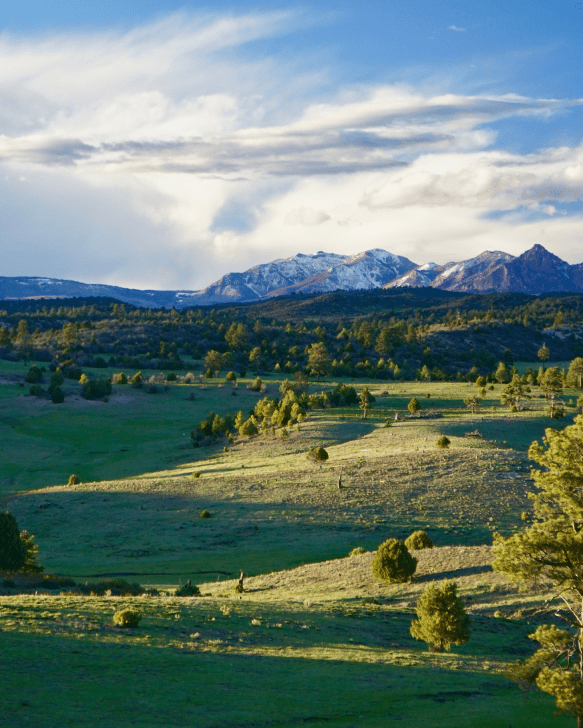Flyfishing During High Water, Ranches For Sale
Runoff season in the Rockies, that long stretch in May and June when the winter’s snowpack transforms itself into torrents of cold and muddy water, can send flyfishers into a couple of months of depression. Many anglers write off runoff season entirely, choosing instead to spend those “dirty water weeks” swinging golf clubs or pushing lawnmowers.
But it doesn’t have to be so. Savvy flyfishers can find places to fish when the rivers look like chocolate milk. Keeping a few things in mind will enable you to continue fishing right through high water season.
First, watch the weather and the streamflows. Although summer is just around the corner, runoff season is officially springtime in the Rockies, which means that serious cold fronts still surge down from the Arctic from time to time. When the fronts pass, snowmelt slows down and often provides windows of clearer and lower water for a few days. Time your fishing excursions during these clearer-water periods. Many streamflows are tracked daily at http://water.usgs.gov/waterwatch.
Second, most tailwaters that flow from beneath reservoirs run clear and very fishable right through runoff season. Well-known Rocky Mountain tailwaters include the Green below Flaming Gorge Reservoir, the Fryingpan below Reudi Reservoir, the Blue below Dillon Reservoir, the North Platte below Alcova Reservoir, the South Platte below Cheesman Reservoir. the South Platte below Spinney Mountain Reservoir, and the San Juan below Navajo Reservoir. Flyfishing can be exceptional on these rivers during runoff season, but the crowds can be exceptional, too. To escape the hordes, search out smaller impoundments on smaller streams. An invaluable prospecting tool for these smaller tailwaters is the Delorme Topographic Atlas Series, available for each of the Rocky Mountain States.
Third, consider stillwater fishing as an alternative. While diehard stream anglers usually find unmoving water boring, heavy hatches of midges, damselflies and caddisflies on ponds and lakes can change their attitude in a hurry. Rising fish can be found on stillwaters throughout the Rockies in May and June, and provide regular action for those needing to satisfy their dry fly craving. Some stillwaters can be fished effectively from shore or by wading, but most stillwaster anglers find a float tube or pontoon boat to be indispensable for sneaking up on the lunkers just out of bank-casting range.
Fourth, seek out smaller tributaries that may run high, but are often clearer than larger rivers during runoff season. Runoff varies widely on these tributaries, and a south-facing drainage may be through with runoff weeks ahead of a north-facing drainage. Again, Delorme’s Atlases are superb research tools for finding smaller drainages worth exploring.
Finally, you can tackle high water head-on, but you’ll need to be smart about it. Staying out of the water entirely is the advised safe approach on most streams during runoff. Focus on fishing the edges, the slower water right by the banks where fish concentrate to escape the strong flows. This water may be right at your feet, so short, accurate casts are in order. Don’t worry about spooking fish, for the water will probably be off-color anyway. Use larger flies like Woolly Buggers and Stimulators, or bright flies like Red San Juan Worms. The trout will surely be present, just give them something they can see.
Runoff season fishing isn’t the easiest to find, but if you’re willing to expand your horizons, do some research and experiment just a bit, you can keep on flyfishing while your friends are chasing down white balls with clubs. Or mowing the lawn. Or cleaning out the garage. What’s your pleasure?


